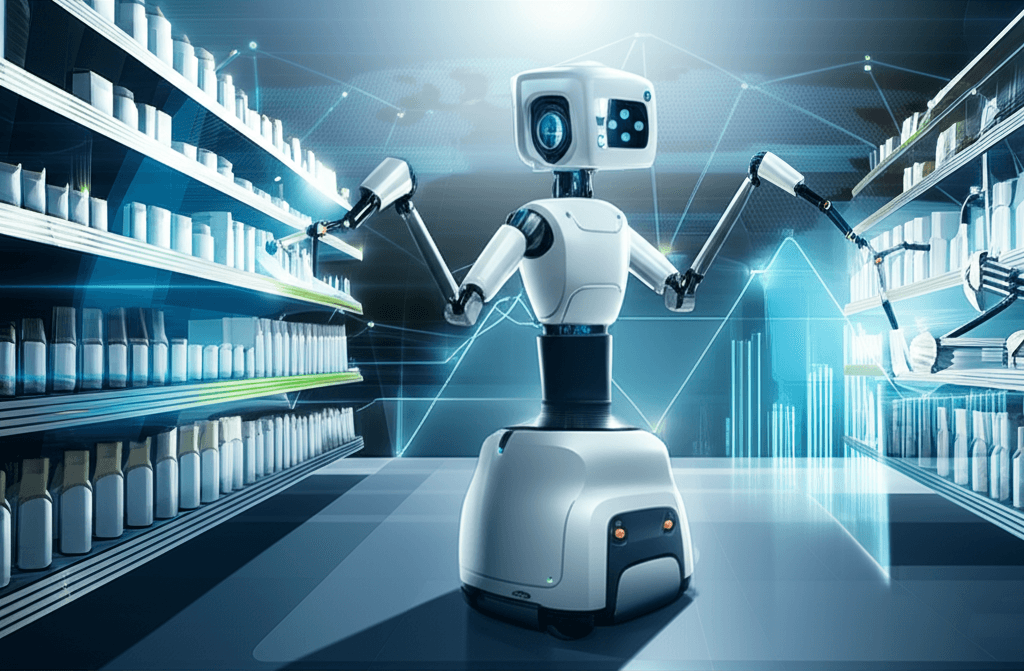Galbot Lands $151M, Fuels Global Embodied AI Robot Deployment
A $151M infusion powers Galbot's advanced embodied AI robots for a rapid rollout in stores and factories.
July 9, 2025

In a significant move for the artificial intelligence sector, Chinese robotics company Galbot has secured approximately $151 million in a recent funding round aimed at accelerating the deployment of its embodied AI robots.[1][2] This capital infusion, one of the largest single-round investments in China's burgeoning humanoid robotics and embodied intelligence industry, signals a strong investor conviction in the future of robots that can perceive and interact with the physical world in a human-like manner.[2][3] The investment was co-led by battery manufacturing giant CATL and Puquan Capital, with significant participation from the Beijing Robot Industry Fund, the China Development Bank's Science and Technology Innovation Fund, and Qiming Venture Partners.[2][4] This latest round brings Galbot's total funding to over $330 million since its establishment in 2023, positioning it as a major player in the global race to commercialize advanced robotics.[1][2]
The fresh capital is earmarked for the widespread deployment of Galbot's semi-humanoid mobile manipulators, particularly the G1 model. This dual-arm, wheeled robot is designed for complex tasks in retail and industrial settings.[5][6] In the retail sector, the company has already deployed its robots in nearly 10 unmanned convenience stores across Beijing, where they autonomously manage inventory, restock shelves, and handle packaging for thousands of different products.[1][5][6] Galbot plans to expand its presence to 100 stores nationwide by the end of the year, a process streamlined by a rapid deployment system that takes less than a day per store.[5][6] This push into retail is a clear demonstration of the company's strategy to move from development and demonstration to large-scale, real-world application, a transition that many in the industry are watching closely.
A cornerstone of Galbot's strategy and a key driver of investor interest is its significant progress in embodied AI, specifically its proprietary vision-language-action (VLA) models.[2][5] The company's GraspVLA model, launched in early 2025, is described as an end-to-end embodied AI trained on billions of simulated physical interactions.[1][2] This technology enables "zero-shot learning," which allows the robots to generalize and perform new tasks without requiring additional, specific training for every new object or situation.[1][4] For instance, the GroceryVLA model allows the G1 robot to handle a wide variety of items, from fragile glass jars to soft packaging, adapting in real time to cluttered and unpredictable environments.[1][4] This ability to learn and adapt is a critical step toward creating truly autonomous systems that can function effectively in dynamic human-centered spaces.
Further solidifying its path to commercialization, Galbot has entered into a strategic joint venture with Boyuan Capital, the investment arm of the global industrial giant Bosch Group.[1][2] This partnership, which also includes a strategic memorandum with Bosch China, will focus on developing and deploying embodied AI robots for industrial manufacturing, particularly in the automotive sector.[2][5][4] The collaboration, named the Boyin Innovation Alliance, aims to leverage Bosch's extensive industrial expertise to promote the global commercialization of these intelligent robots, redefining manufacturing processes through advanced automation.[1][4] The involvement of established industrial powerhouses like Bosch and CATL not only provides substantial financial backing but also crucial industrial support and a clear pathway for deploying Galbot's robots in high-value industrial scenarios.[6]
The substantial funding and strategic partnerships secured by Galbot reflect a broader surge in investment and innovation within the embodied AI and robotics sector.[7] Governments and private investors globally are recognizing the transformative potential of general-purpose robots, with China designating embodied AI as a national priority backed by significant innovation funds.[8][7] This influx of capital is fueling intense competition and accelerating the transition of humanoid and semi-humanoid robots from research prototypes to commercially viable products. As companies like Galbot move to scale their deployments, the industry is on the cusp of a new era of productivity, where autonomous robots could alleviate labor shortages and work alongside humans in a wide range of industries, from logistics and manufacturing to healthcare and retail.[3][9] The success of these early deployments will be a critical indicator of the long-term impact and adoption rate of embodied AI worldwide.